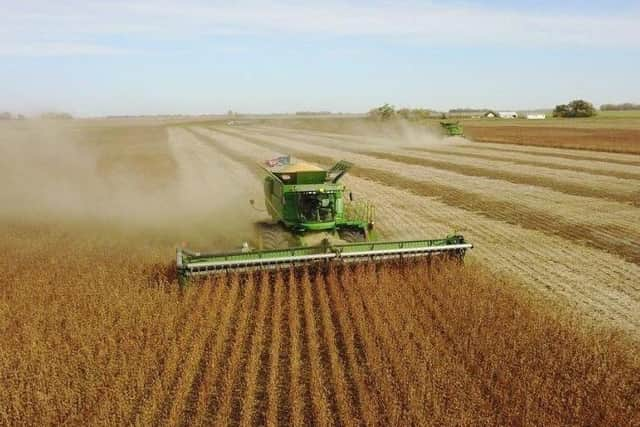Tight supply drives up feed and fertiliser prices - NIGTA
and live on Freeview channel 276
Weather in South America is one of the main concerns at the minute according to Grain Trade Association CEO, Robin Irvine.
The Brazilian soya harvest has been seriously delayed by heavy rainfall and this has also impacted on the planting of the second (Safrinha) maize crop. By this stage 2/3rds of the soya crop should be on its way to the ports but currently only 1/3 has been harvested. This has caused a serious delay in the movement of material to the quayside and an ever lengthening queue of vessels waiting offshore for its arrival. The cost of sea freight has soared as dozens of large panamax vessels, with capacity of up to 80,000 tonnes each, remain at anchor off the Brazilian coastline. Elsewhere, the US are reporting that Soya stocks are tighter than they have been for a decade and prices have been forced up in a battle for acres as maize and soya compete to be the most profitable crop for American farmers.
Advertisement
Advertisement
The relentless Chinese demand is also driving up grain prices as China has moved from a minor player in the maize market to replace the EU as the world’s biggest importer. This has reduced the tonnage of maize available for Europe and along with the shortfall of 15 million tonnes in the EU wheat harvest it is hard to see how the European grain demand can be met. Russia, a major wheat exporter is not an active seller amid continued uncertainty around export taxes as the government seek to limit domestic food price increases. Barley may fill some of the gap but there is no doubt that Europe needs a big harvest this year to rebuild stocks.


Rising grain prices are inevitably followed by increased demand for fertiliser as growers look to expand the area sown and also to maximise yields per acre. Nitrogen is the principal crop nutrient with urea as the most widely traded form of the chemical at a global level. A substantial portion of the world urea market is transacted through large scale government contracts which have the potential to take huge tonnages of material off the market and this year they have had the effect of creating a very tight supply situation and have restricted the tonnage available to local traders. This is pushing up prices of all nitrogen fertilisers and may cause supply issues throughout the season.
Increasing Phosphate prices are also fuelled by the strong grain markets with both Di-ammonium Phosphate (DAP) and Triple Super Phosphate (TSP) reflecting increased demand from the cereal sector. Potash remains good value for money and should not be overlooked – particularly on grass destined for multiple silage crops.